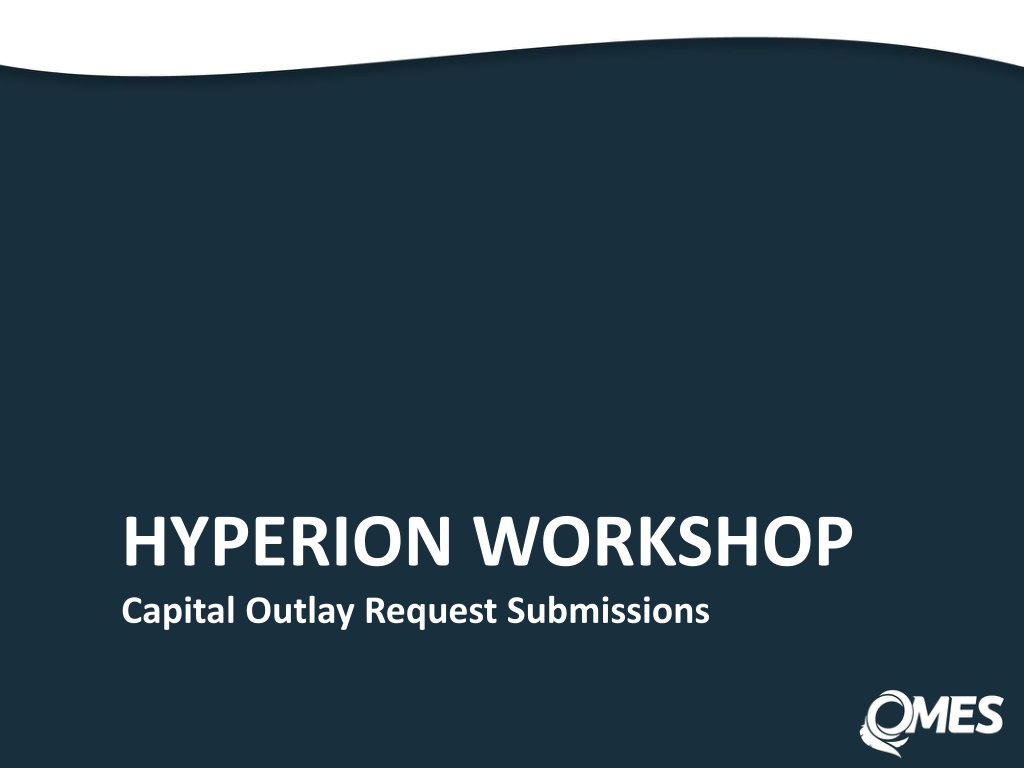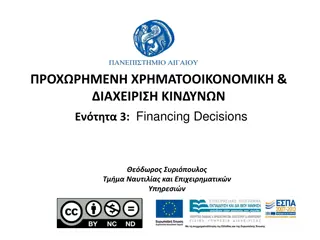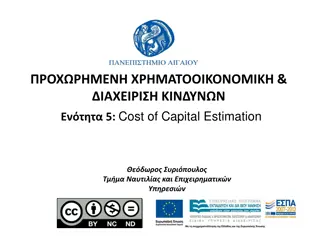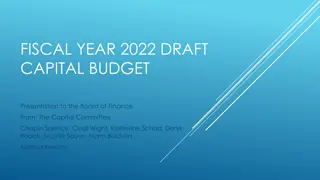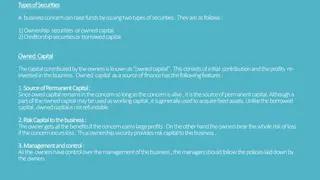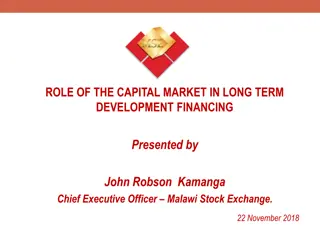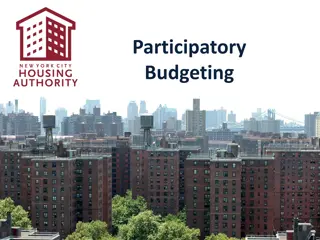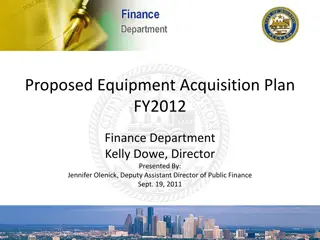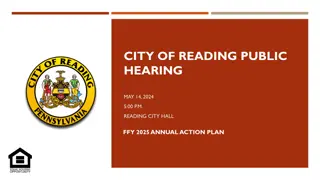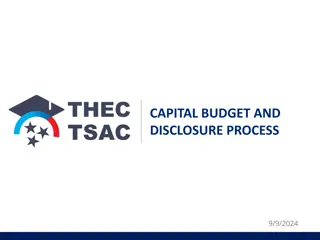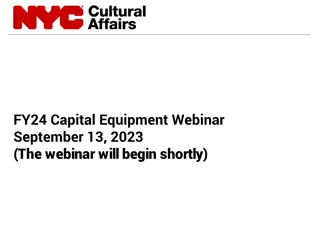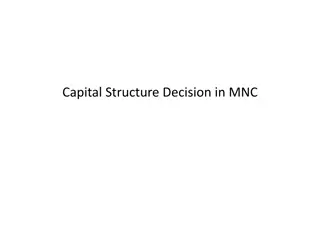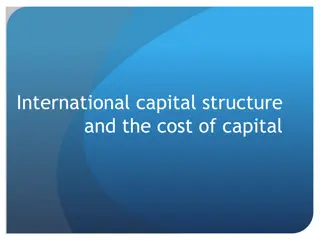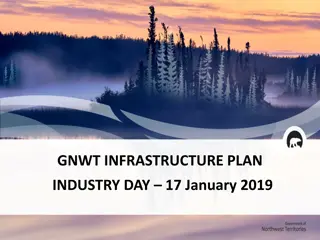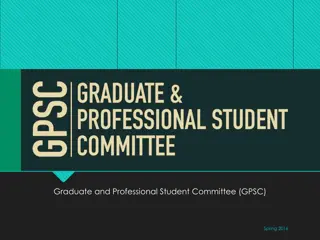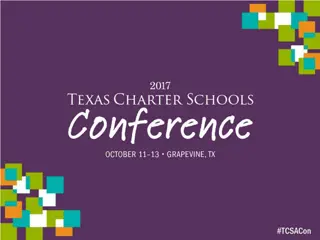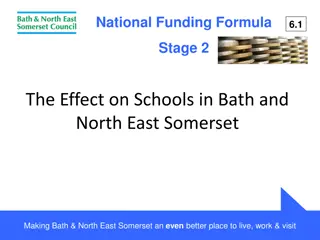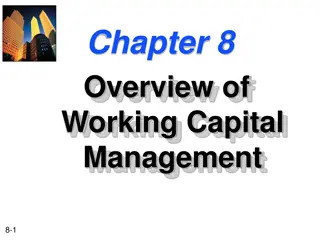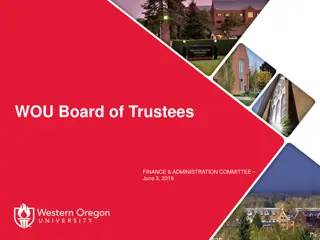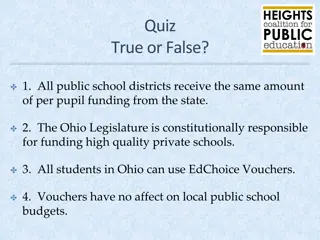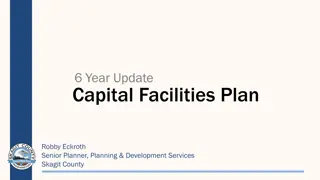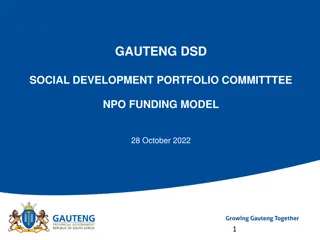Overview of Capital Improvements Plan Process and Funding
Explore the Capital Improvements Plan process, evaluation guidelines, funding sources, and participating entities in Oklahoma. Learn how the plan aims to systematically manage and finance projects to align with state objectives. Discover who can participate and who is exempted from the planning process.
Download Presentation

Please find below an Image/Link to download the presentation.
The content on the website is provided AS IS for your information and personal use only. It may not be sold, licensed, or shared on other websites without obtaining consent from the author. Download presentation by click this link. If you encounter any issues during the download, it is possible that the publisher has removed the file from their server.
E N D
Presentation Transcript
HYPERION WORKSHOP Capital Outlay Request Submissions
Agenda: Overview of Capital Improvements Plan process Evaluation Guidelines Cost Estimation & Phasing Submittal Expectations Creating a Decision Package Next Steps Question & Answer
The Capital Improvements Plan Authority State Capital Improvement Planning Act , 62 O.S. 900 908 Long Range Capital Planning Commission Staffed by OMES, Division of Capital Assets Management Planning Assisted by the State Bond Advisor s Office Oklahoma Administrative Rules, Title 428
The Capital Improvements Plan Goals Systematically plan, schedule, manage, monitor and finance capital projects to ensure efficiency and conformance with state strategic objectives Guided by the LRCPC s Guiding Principles for Real Property Asset Management and the State s new performance measurement targets
The Capital Improvements Plan Who participates? All state governmental entities, defined: The State of Oklahoma or any agency, board, commission, authority, department, public trust of which the state is the beneficiary or other instrumentality of state government, other than a public trust with the state as a beneficiary whose jurisdiction is limited to one county
The Capital Improvements Plan Who is exempted? The Ordnance Works Authority The Commissioners of the Land Office Public trusts with a jurisdiction limited to one county
The Capital Improvements Plan How is the plan funded? Maintenance of State Buildings Revolving Fund Sales proceeds from real property transactions Direct appropriations Other sources Agency revolving funds Federal funds Grants, gifts & donations Section 13 and Section 13 Offset
The Planning Process Submittal Agency s internal development and prioritization of requests By June 30: Enter requests into Hyperion Submittal Review Technical aspects of submission will be covered later today Refine Evaluate Approve
The Planning Process Review, Refine & Evaluate July-October Review by DCAM-Planning LRCPC Guiding Principles Evaluation guidelines Agency strategic plan Statewide performance measures Submittal Review Submittal may be returned to agency for edits or additional information Refine LRCPC: Evaluate First Draft in September Final Draft in November Approve
The Planning Process Approval LRCPC Submittal November/December Legislature Plan submitted on or about December 1 Project list submitted within first 7 days of session Review Refine 45 days to review project list May disapprove in whole or by line-item through a concurrent resolution If no resolution by 45th day, plan is considered approved Evaluate Approve
Implementation If approved, project implementation begins July 1st (one year after submittal deadline) DCAM- Construction and Properties (CAP) manages implementation of approved projects
Timeline 2016 2015 2017 December 1: LRCPC submits 45 days: Legislature considers FY2017 CIP 45 days: Legislature considers FY2018 CIP July 1: FY2017 CIP Implementation begins July 1: FY2018 CIP Implementation begins CIP to Legislature June 30: Request deadline for FY2017 CIP June 30: Request deadline for FY2018 CIP June 30: Request deadline for FY2019 CIP 1st 7 days of session: LRCPC submits FY2017 project list to Legislature 1st 7 days of session: LRCPC submits FY2018 project list to Legislature
What is a Capital Project? A planned expense for a facility or physical item requiring a minimum expenditure of $25,000, having a useful lifespan of five years or more, and meeting one of the following definitions: Involves the acquisition or construction of any physical facility; Involves the acquisition of land; Involves the acquisition or construction of public utilities; Involves the acquisition of major equipment or physical systems, such as computer technology, communications systems, major specialized vehicles, etc.;
What is a Capital Project? Involves modifications to facilities, including additions to existing facilities, which increases the useful life of the facility, and/or Capital maintenance or replacement projects on existing facilities, which are defined as non-recurring projects to repair, maintain or replace existing facilities for the purpose of protecting the state s investment in a facility and minimizing future maintenance and replacement costs. To be considered a capital maintenance project, a project must have an interval between expenditures of at least five years. Capital projects do not include normal operating expenditures for salaries, routine maintenance or repair, or activities associated with or consumed during a single fiscal year.
Evaluation Criteria A. Impact on Capital Costs Describe the project s ability to reduce capital costs by avoiding the snowball effect of deferred maintenance Considerations: Total cost of project Anticipated savings on capital expenses Will delaying the project escalate costs beyond normal inflation?
Evaluation Criteria B. Impact on Operating Costs Describe the project s impact on the agency s operating budget. Considerations: Will the project increase/decrease: Operating costs? State revenues? Productivity?
Evaluation Criteria C. Leverage Describe how non-state funding will be leveraged to complete the project. Considerations: Amount of non-state funding used for project Ratio of non-state to state funding
Evaluation Criteria D. Legal Obligations and Mandates Describe any court orders, federal mandates or state laws that require the project s completion. Considerations: Do existing laws make the project feasible? Is the agency is under direct order to complete the project? Is the project needed to meet minimum federal or state requirements?
Evaluation Criteria E. Impact on Service to the Public Describe how the proposed project improves the level of service provided by the agency. Considerations: Does the service already exist within other agencies? Does the project focus on a service that is currently a high priority public need?
Evaluation Criteria F. Urgency of Maintenance Needs Describe how project will maintain or restore essential service. Considerations: Is the service currently interrupted or in imminent danger of being interrupted? Will project restore service? Is the project the most cost-effective way to restore or maintain service?
Evaluation Criteria G. Prior Phases Describe any prior expenditures and completed phases for the project. Considerations: Has the project received prior funding? Does the project require additional funding in order to be fully operational?
Evaluation Criteria H. Agency Mission and Strategic Goals Describe how the project advances the mission of the agency. Considerations: Does the project address a goal outlined in the agency strategic plan? What is the project s priority among other projects proposed by the agency?
Evaluation Criteria I. Safety and Health Describe how the project addresses health- related environmental and safety impacts. Considerations: Addresses a health-related environmental or safety hazard Reduces risk to the public or to state employees
Cost Estimation Be as accurate as possible Some options: Submit a professional estimate Use recently completed projects to estimate costs, if similar to request Use industry-standard sources to estimate (RS Means) Contact DCAM-CAP for assistance with estimating your project costs
Project Phasing Schedule your requests over the eight year period of the plan Phase you projects by year according to what you can accomplish Ex: project phased over four years Year one: Pre-design and A&E Year two: 30% of construction funding Year three: 70% of construction funding Year four: FF&E funding
How to avoid a submittal kickback Ask yourself, What information would I need to make an approval recommendation on this request? Keep it concise while providing adequate information Upload relevant and accurate supporting documents Answer all questions Self-evaluate your submittals Meet the June 30th deadline
Training UPK encoreupk.ok.gov/kcenter Statewide Goals & Topics Key Performance Indicators Position Budgeting Operational Budgeting Strategic Plan System - Hyperion https://encore.ok.gov CAFR Capital Budgeting
TRAINING | UPK User Productivity Kit (UPK) is the training tool for project encore. 5 1 2 3 4 Watch a recording of the task being completed with on- screen instructions in a simulated Hyperion system Practice completing the task with step-by-step instructions in a simulated Hyperion system. Test your way through each topic, with instructions only being provided when an incorrect action is performed. On-screen instructions for assistance though a task while you are working in the live system Save the instructions in a word document, so you can reference or print them on convenience. Let s Practice!
Key Takeaways UPK is the training environment you will always have access to this if you get stuck. encoreupk.ok.gov/kcenter To enter your request, the live system is https://encore.ok.gov When logging in, always Navigate -> SOKPLAN & Check your User Variable Options! When you are finished submit for approval and notify the Capital Asset Management Division.
Next Steps Submit OMES Form 301 EPLAN, System Access Access to live Hyperion system Stay tuned for upcoming work sessions in May and June Enter requests by June 30th DCAM-Planning will schedule meetings with submitting agencies in August to discuss requests
Questions? Ben Davis, AICP Director, DCAM-Planning ben.davis@omes.ok.gov (405) 522-1652 Justin Henry Assistant Planner Justin.henry@omes.ok.gov (405) 522-1650 http://ok.gov/DCS/Capital_Planning
